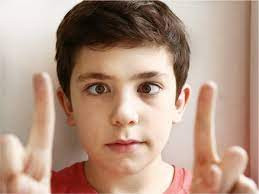Squint eye, also known as strabismus, is diagnosed through a comprehensive eye examination performed by an ophthalmologist or optometrist. The diagnosis involves several steps and tests to determine the extent of the eye misalignment and identify any underlying causes. Here's how squint eye is typically diagnosed:
1. Medical History: The doctor will start by asking about the patient's medical history, including any symptoms, family history of eye conditions, and the duration of the eye misalignment.
2. Visual Acuity Test:This test measures how well each eye can see at various distances. It helps identify any differences in visual acuity between the two eyes, which could be a sign of squint eye.
3. Cover Test: In this test, the patient is asked to focus on a target while the doctor covers one eye and then quickly uncovers it. The doctor observes whether the uncovered eye moves to realign with the target. This test can reveal the presence and direction of the eye misalignment.
4. Corneal Light Reflex Test (Hirschberg Test):A light is shone into the patient's eyes, and the doctor observes the reflection of the light on the corneas. If the reflections are not centered, it indicates an eye misalignment.
5. Ocular Motility Exam: This involves assessing the range of eye movements in different directions. The doctor will observe how well the eyes can move together and individually. Limited or abnormal eye movements can indicate squint eye.
6. Stereopsis Test:This test evaluates the ability to perceive depth and three-dimensional space. Patients are typically shown images that appear three-dimensional when viewed with both eyes. This helps assess the degree of binocular vision and eye coordination.
7. Refraction Test: A refraction test determines if the patient needs eyeglasses or contact lenses to correct any refractive errors that might contribute to the eye misalignment.
8. Dilated Eye Examination:In some cases, the doctor may use eye drops to dilate the pupils, allowing for a more thorough examination of the internal structures of the eye, including the retina and optic nerve. This can help rule out other underlying eye conditions.
9. Specialized Tests: Depending on the suspected cause of the squint, additional tests such as imaging studies (MRI or CT scan) or specialized assessments of eye muscles and nerve function may be conducted.
Once the diagnosis is confirmed, the doctor will determine the type of squint, its severity, and any associated factors. Based on this information, they can recommend an appropriate treatment plan, which may include eyeglasses, vision therapy, eye exercises, or surgery.
It's important to have regular eye exams, especially for children, as early detection and intervention can greatly improve the outcome of treating squint eye.
what are you waiting for? squint eye treatment is a safe surgery with an excellent outcome. Get in touch with the best surgeon Dr. Sonia Maheshwari Kothari practicing at Clear Sight Eye care and Laser Center.

